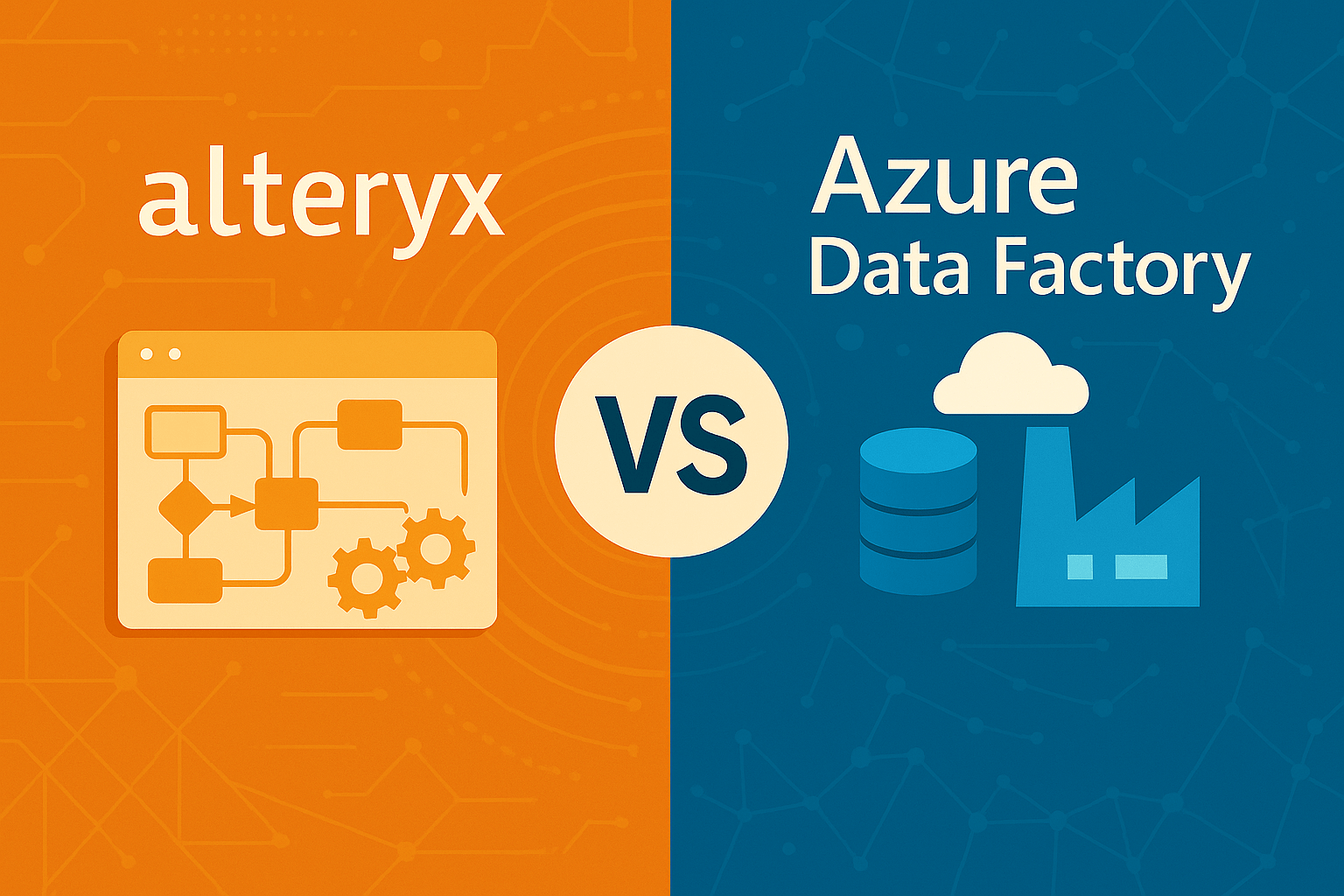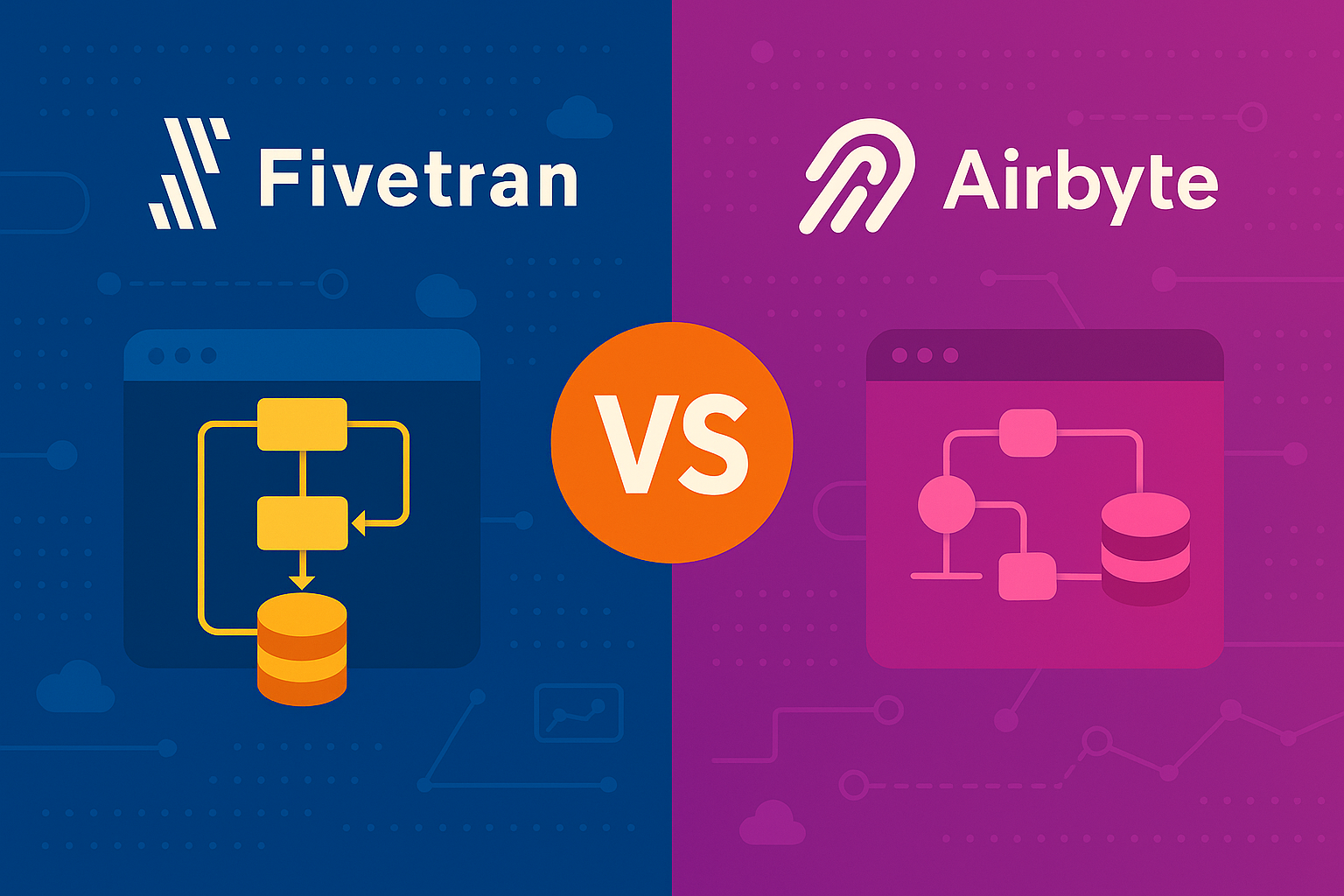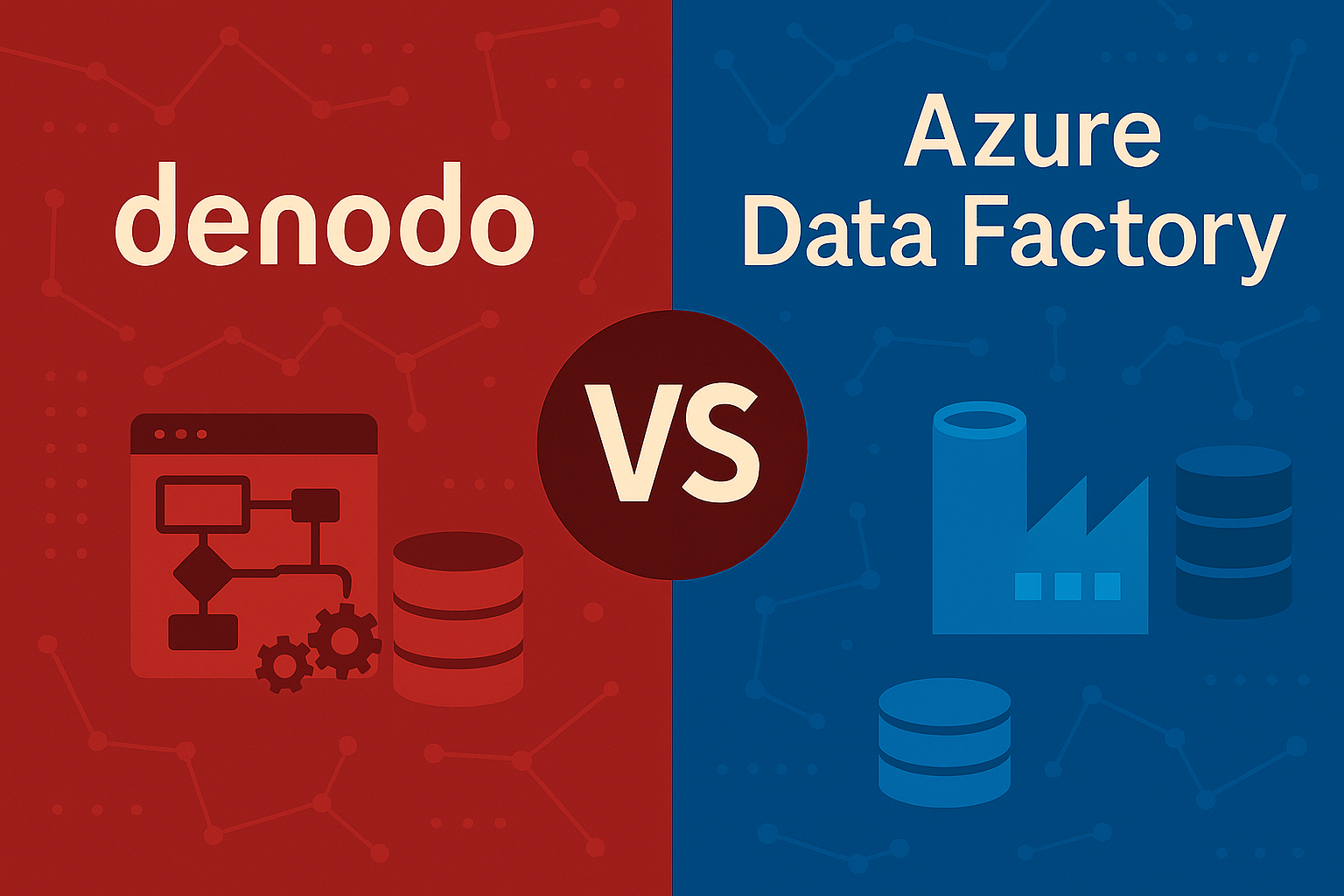Fivetran vs Talend: Which Data Integration Tool is Right for You?
In the rapidly evolving world of data management, choosing between Fivetran vs Talend requires careful consideration of your organization’s specific needs, technical resources, and long-term data strategy.
This comprehensive comparison will help you determine which data integration tool aligns best with your business requirements.
Data Integration Platform Comparison
|
Feature |
Factory Thread |
Fivetran |
Talend |
|---|---|---|---|
|
Focus |
Real-time OT/IT data federation |
Cloud data replication (ELT) |
Enterprise ETL/ELT with data quality |
|
Deployment Model |
Edge, on-prem, hybrid |
Cloud-only |
Cloud, on-prem, hybrid |
|
Transformation Approach |
Virtualization & lightweight flows |
Post-load via dbt or warehouse |
Pre/post-load custom pipelines |
|
Technical Skill Required |
Low (no-code/AI-driven) |
Low |
Moderate to high |
|
Ideal For |
Manufacturing, industrial, hybrid ops |
SaaS/DB replication for analytics |
Complex, enterprise data architectures |
|
Customization |
Medium (template-based + AI prompts) |
Low |
High |
|
Real-Time Capability |
✅ Full live data federation |
⚠️ Batch updates |
⚠️ Requires setup |
What Makes These Integration Tools Unique?
Fivetran – Cloud Automation Excellence

Fivetran gives you complete control over data replication with minimal configuration. This makes it the perfect choice for teams who like knowing their data will flow automatically without constant maintenance or manual intervention.
Key benefits of Fivetran:
-
Automated data pipelines that require minimal technical expertise
-
Pre-built connectors for 150+ data sources, from SaaS applications to databases
-
Simple, no-code interface accessible to non technical users
-
Fast implementation with standardized workflows
Fivetran operates on an ELT (Extract, Load, Transform) philosophy, focusing first on getting raw data into your cloud data warehouse before transformation occurs. This approach allows data teams to maintain flexibility in how they transform data after it lands in the target system.
Talend – Comprehensive Integration Power

Using Talend in your data environment can be very rewarding. Talend offers powerful customization and handles complex integration patterns, giving you robust, flexible solutions that blend with your existing data stack.
Key benefits of Talend:
-
1000+ pre-built connectors covering everything from legacy systems to modern APIs
-
Advanced transformation capabilities for sophisticated data quality management
-
Support for on-premises, cloud data warehouses, and hybrid deployments
-
Open-source foundation with enterprise options through Talend Data Fabric
Talend supports both ETL and ELT approaches, giving data engineers more control over how and where data transformation occurs in the integration process.
Fivetran vs Talend: What’s the Difference?

Understanding the fundamental differences between Fivetran and Talend will help you determine which tool aligns better with your organization’s data infrastructure and team capabilities.
Operational Control
-
Fivetran: Complete control over replication with minimal maintenance. Fivetran handles schema changes, API updates, and automated workflows without requiring your intervention. This approach drastically reduces the need for manual intervention but offers less customization.
-
Talend: Deep customization, but requires more technical expertise. Talend provides granular control over every aspect of your data flows, but this power comes with increased complexity and maintenance requirements. This makes it ideal for organizations with dedicated data engineers.
Data Handling
-
Fivetran: Focus on ELT with automated workflows. Fivetran excels at extracting data from sources and loading it into your data warehouse with minimal transformation during the process. The platform supports change data capture to efficiently sync data incrementally.
-
Talend: Support for ETL, ELT, and advanced data quality. Talend provides robust capabilities for transforming data during extraction, enforcing data integrity rules, and implementing sophisticated data governance practices across your entire data fabric.
Scale
-
Fivetran: Streamlined for cloud data warehouses with pricing based on monthly active rows. Fivetran handles large data volumes efficiently but is primarily designed for analytics-focused use cases.
-
Talend: Can handle enterprise-scale integration challenges across data lakes, data warehouses, and legacy systems. Talend’s architecture supports big data platforms and complex data flows involving multiple systems.
Flexibility
-
Fivetran: Best for standardized data source connections. While Fivetran offers excellent reliability, it follows a template-based approach that works best when you don’t need extensive customization of the integration process.
-
Talend: Excels with complex, customized integration patterns. If you need to build custom data pipelines with sophisticated business logic or interact with unusual data sources, Talend provides the tools to create exactly what you need.
What Experienced Users Say
Fivetran Enthusiasts Love:
- Zero-maintenance data pipelines that “just work”
- Protection from technical complexity in the data extraction process
- Quick time-to-value with minimal setup effort
Talend Users Love:
- Extensive customization options for complex requirements
- Comprehensive integration capabilities across diverse environments
- Dramatic data transformation power with built-in data quality tools
Requirements Overview
Before committing to either platform, it’s essential to understand the requirements for successfully implementing and maintaining Fivetran or Talend in your data environment.
Technical Requirements
-
Fivetran: Minimal technical expertise required, as the platform automates most configuration and maintenance tasks. Your team needs primarily to understand your cloud data warehouse architecture and data modeling concepts.
-
Talend: Requires more technical proficiency, including knowledge of data integration patterns, SQL server configurations, and potentially Java for advanced customizations. The steep learning curve is balanced by extensive capabilities.
Environment Support
-
Fivetran: Optimized for cloud environments, with strong support for major cloud data warehouses like Snowflake, BigQuery, and Redshift. Limited support for on-premises destinations.
-
Talend: Flexible deployment options, supporting cloud, on-premises, and hybrid architectures. Talend can integrate with virtually any data environment, including data lakes and big data platforms.
Cost Structure
-
Fivetran: Subscription model based on data volume, specifically monthly active rows processed. Pricing can become significant as data volumes grow, but implementation costs are relatively low.
-
Talend: Offers various pricing models including per-seat licensing for Talend Data Fabric. Initial implementation costs may be higher due to more complex setup and potential need for specialized expertise.
Both require proper data source access and well-defined integration goals to be successful.
Which Integration Tool is Right for You?
The choice between Fivetran and Talend ultimately depends on your specific data integration needs, technical resources, and organizational priorities.
Choose Fivetran if you want:
✔ Total automation with minimal maintenance for your data pipelines
✔ Consistent data replication all year round without technical headaches
✔ Quick implementation without coding or extensive configuration
✔ A suitable platform for analytics-focused teams with limited engineering resources
✔ An easy to use platform that non-technical users can manage
Fivetran is ideal for organizations that prioritize speed and simplicity in their data integration strategy. A mid-sized e-commerce company might use Fivetran to consolidate data from their marketing platforms, CRM, and transaction systems into a cloud data warehouse for business intelligence.
Choose Talend if you want:
✔ Maximum customization flexibility for complex integration scenarios
✔ Complete control over transformation logic and data quality management
✔ Broad support for diverse data environments including legacy systems
✔ Support for sophisticated data governance requirements
✔ The ability to build and maintain your own data connectors
Talend shines in complex enterprise environments with varied data sources and stringent compliance requirements. A global financial institution might leverage Talend to integrate data across multiple regions, enforce strict data governance policies, and support both operational and analytical use cases.
Key Differences at a Glance
|
Feature |
Fivetran |
Talend |
|---|---|---|
|
Primary Focus |
Automated data replication (ELT) |
Customizable integration (ETL/ELT) |
|
Pre-built connectors |
150+ |
1000+ |
|
User Interface |
No code platform, simplified |
Feature-rich, more complex |
|
Deployment Options |
Cloud-only |
Cloud, on-premises, hybrid |
|
Transformation Capabilities |
Limited (partners with dbt) |
Extensive built-in options |
|
Technical Expertise Required |
Low |
Moderate to High |
|
Best For |
Speed to insight, automation |
Complex integration, governance |
|
Pricing Model |
Based on data volume |
Tiered licensing model |
Making Your Decision
When evaluating Fivetran vs Talend for your organization, consider these critical factors:
-
Technical Resources: Assess your team’s capabilities and availability. Fivetran requires less technical expertise to implement and maintain, while Talend offers more power but demands greater coding knowledge.
-
Integration Complexity: Consider the complexity of your data integration needs. If you primarily need to connect standard SaaS applications to a data warehouse, Fivetran may be sufficient. For complex transformations or unusual data sources, Talend’s flexibility is valuable.
-
Data Volume: Evaluate your current and projected data volumes. Fivetran’s pricing based on monthly active rows can become expensive with large data volumes, while Talend’s pricing model may be more predictable for high-volume scenarios.
-
Customization Needs: Determine how much customization you require. If standard connectors meet your needs, Fivetran provides a streamlined experience. If you need to build custom data pipelines or your own data connectors, Talend offers more flexibility.
-
Long-term Strategy: Consider your future data architecture. Fivetran works best in cloud-centric environments, while Talend supports more diverse architectural approaches including hybrid and on-premises deployments.
Conclusion
Both Fivetran and Talend are powerful data integration tools with distinct approaches to solving data movement challenges. Fivetran excels in providing automated, low-maintenance data pipelines with minimal configuration, making it ideal for organizations seeking simplicity and speed. Talend offers comprehensive integration capabilities with extensive customization options, perfect for complex enterprise environments with diverse requirements.
If you want simplicity and automation with minimal technical overhead, Fivetran is your answer. If you need power and customization to handle complex integration scenarios, Talend is the better choice.
Before making your final decision, take time to assess your data integration requirements, technical resources, and specific connection needs. Consider starting with a trial of both platforms to experience firsthand how they handle your specific data challenges. Remember that the right data integration tool is one that not only meets your current needs but can also grow with your organization’s evolving data strategy.
Factory Thread – Real-Time Manufacturing Integration at the Edge
While Fivetran and Talend dominate discussions in modern data integration, neither is purpose-built for industrial environments where real-time decision-making and operational resilience are critical. That’s where Factory Thread offers a compelling third option: an integration platform designed specifically for manufacturing, supply chain, and OT/IT convergence.
Key benefits of Factory Thread:
-
Real-Time Data Federation Across OT & IT: Connect to MES, SCADA, PLCs, SQL databases, APIs, and more—without replicating data.
-
Edge & On-Prem Support: Deploy lightweight runtimes on-premises or at the edge, ensuring uptime and security for plant-critical operations.
-
Low-Code + AI-Driven Workflows: Build integrations with drag-and-drop tools or AI-generated flows, drastically reducing setup time.
-
OData & REST for BI Tools: Serve virtual endpoints directly to Power BI, Tableau, or custom dashboards—no intermediate ETL pipelines needed.
-
Secure, Compliant, and Scalable: Role-based access control, encryption, audit trails, and enterprise-grade deployment across facilities.
Choose Factory Thread if you want:
✔ Unified visibility across OT and IT data
✔ Real-time integration with plant systems and ERPs
✔ A no-code interface for engineers and analysts
✔ Edge-ready deployment for always-on data pipelines
✔ Secure and compliant operational data orchestration
Bottom line: If your enterprise spans factory floors and executive dashboards, Factory Thread fills the real-time integration gap left by Fivetran and Talend. It empowers teams to integrate, monitor, and act on data—without waiting for pipelines to run or coding custom connectors.
Share this
You May Also Like
These Related Stories

Alteryx vs Azure Data Factory: Which Data Integration Tool is Right for You?

Fivetran vs Airbyte: Which Data Integration Platform is Right for You?



No Comments Yet
Let us know what you think